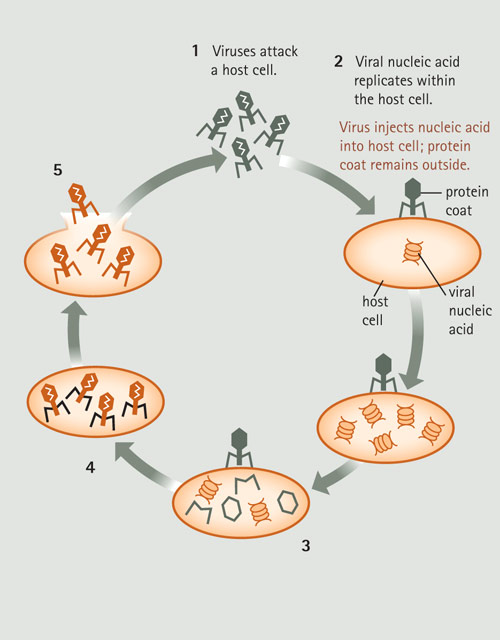One of the biggest debates in modern microbiology revolves around this question: are viruses living organisms? As you might think, this isn’t quite a black and white question. In order for something to be classified as a living organism, it needs to be able to replicate on its own.
Viruses however, are incapable of this – they need a host cell to replicate and ‘live.’ Once inside a cell, a virus can then perform the same functions living cells can – like producing proteins, replicating, and protecting itself form danger.
A viral life cycle contains five different distinct phases: exposure, entry, replication, shedding, and latency.
Generally, a viral infection occurs when a host (i.e. Human) is exposed to a virus. This can be through a physical breach (a cut in the skin), direct inoculation (unsafe needle injections) or direct infection of the surface (inhaling the virus into the lungs). Only after a virus enters the host, can it gain access to certain cells to infect.
Once a host has been exposed, the virus needs to enter the host’s cells; and when inside the cell, the virus hijacks the cell’s machinery to replicate. To get inside the cell, proteins on the viral surface connect with proteins on the cell surface which results in the creation of a pore. Using this pore, viruses enter the cell and begin making copies of itself.
Next, the virus takes control of the cell’s replication machinery and quickly begins making millions of copies of itself.
Once a virus has made enough copies and used up all of the resources inside a cell, shedding occurs. The cell is no longer useful for the virus, and so the cell dies and all the new viruses are released to now infect new cells.
Some special viruses, like HIV, have a latency period. During this time, the virus hides inside the cell and does not replicate in order to evade the host’s immune system. The virus waits, until the time is right to begin replication and start the infection.
As you can see, this question is a difficult one to answer. When you look at the viral life cycle, arguments can be made for both sides; but ultimately, regardless of whether viruses are classified as living or not, efforts should be placed on developing vaccines and treatments.

